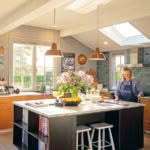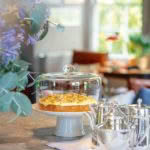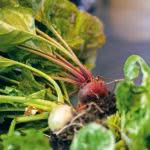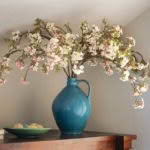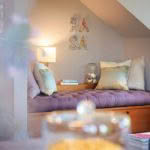The luxury Wairarapa retreat lovingly restored by keen owners
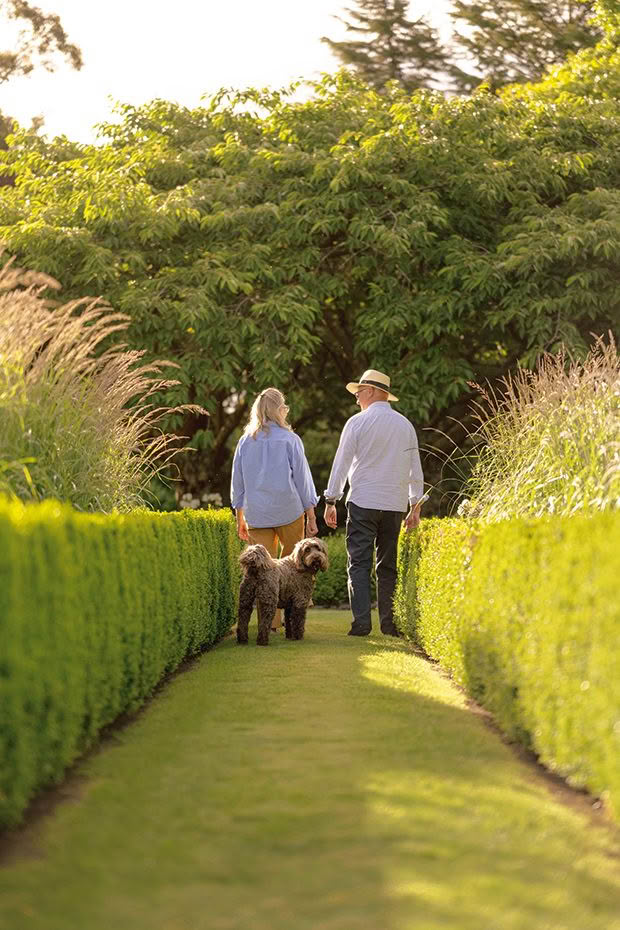
A beautifully restored northern Wairarapa house, a seven-year labour of love for this much-travelled New Zealand couple, is now arms wide open to guests.
Words: Kate Coughlan Photos: Esther Bunning
After a busy career in New Zealand, Canada and Switzerland, and after many attempts at retirement, Rob and Susie Steele have started a new chapter.
Rob says he was so poor at retiring that he became “disruptive in class”. For her part, Susie, who has had several career changes — each iteration more exciting than the last — feels that she may now have reached peak qualification.
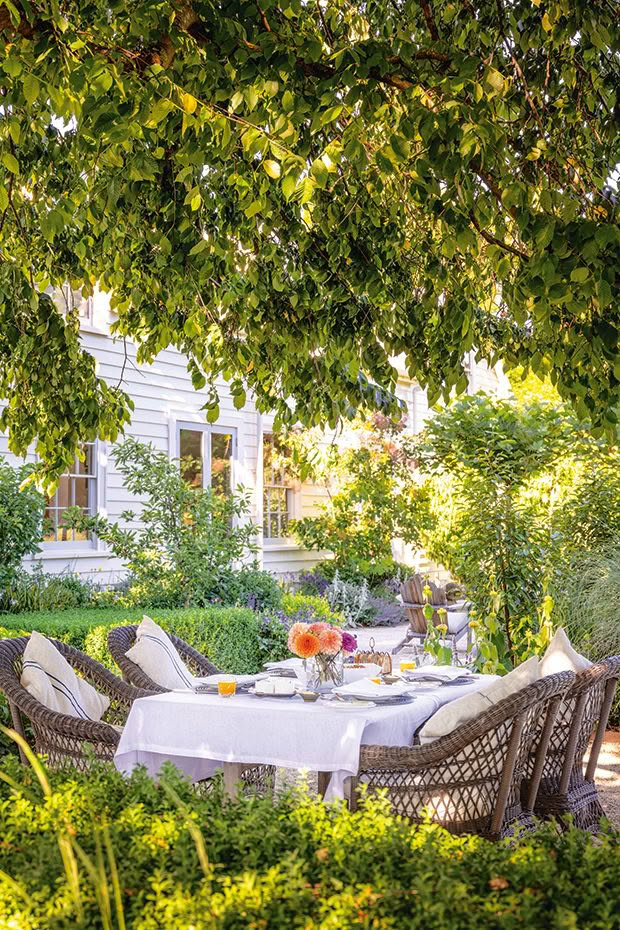
A majestic elm provides dappled light and shade for breakfasts and gin and tonics, enjoyed while watching the early evening antics of tūī whirring through its branches. Owner Rob Steele thinks whoever planted the elm (adjacent to the swimming pool behind) had a wicked sense of humour, for it deposits leaves and flowers — mainly into the water.
In recent years, she’s added a culinary gong after attending a 12-week residential cooking school at the prestigious Ballymaloe Cookery School in County Cork, southern Ireland, owned by chefs Darina Allen and Rory O’Connell. That qualification came on top of one from the Inchbald School of Design in London in international design and architecture, an MBA from Victoria University in health management and an undergraduate degree in physiotherapy.

One of Rob’s failed retirement attempts from a career in finance had taken the couple to Geneva for seven years, where Rob headed the International Organisation for Standardization as secretary-general. While it certainly had its moments, that un-retirement gig proved to him that the world of international standards was fascinating; more about empowering emerging nations to maximise trading opportunities than it is about standardising the weight of a teaspoon of salt or measuring a metre of linen flax.
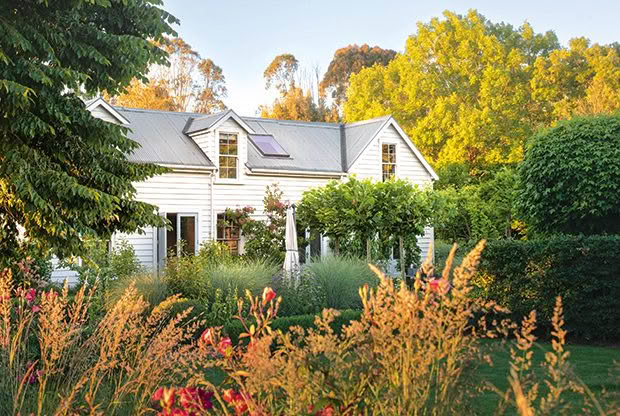
From the moment Rob and Susie (pictured with dogs Coco and Biskit) first drove up the tree-lined drive and saw the house, they felt they’d found somewhere special. That was in 2015, but after shivering through several winters, they called in their Carterton-based friends Gregg Crimp and David Robinson (Robinson Crimp Architects) for a complete makeover. In came double glazing, insulation, heating, more light and an entrance porch for the relocated front door so people knew how to find their way in. Thanks to multiple previous alterations, it was hard to establish an original layout, though part of the house was at one time a shepherd’s hut, then a hay shed and was brought on the back of a truck to the property in the 1970s. That 40-square-metre area, today a live-in kitchen, pantry and an upstairs bedroom tucked under the sloping roof, came from nearby Mt Bruce Station. During the extensive 2018 renovation, newspapers were found pasted into the sarking dating to 1872. The newspaper-adorned sarking is now preserved as a sliding panel door.
The 160-country organisation was established after World War II and acts — as Qualmark does for Aotearoa’s tourism offerings — as a unifying system for defining what “great” looks like, setting consistent benchmarks for businesses and customers alike. It ensures reliability, builds trust, and makes lives easier, safer and better.
Rob enjoyed the work for its beneficial impact, the countries he visited, and the people he met. Both loved life in Geneva, relishing the opportunity to reside in the heart of Europe.
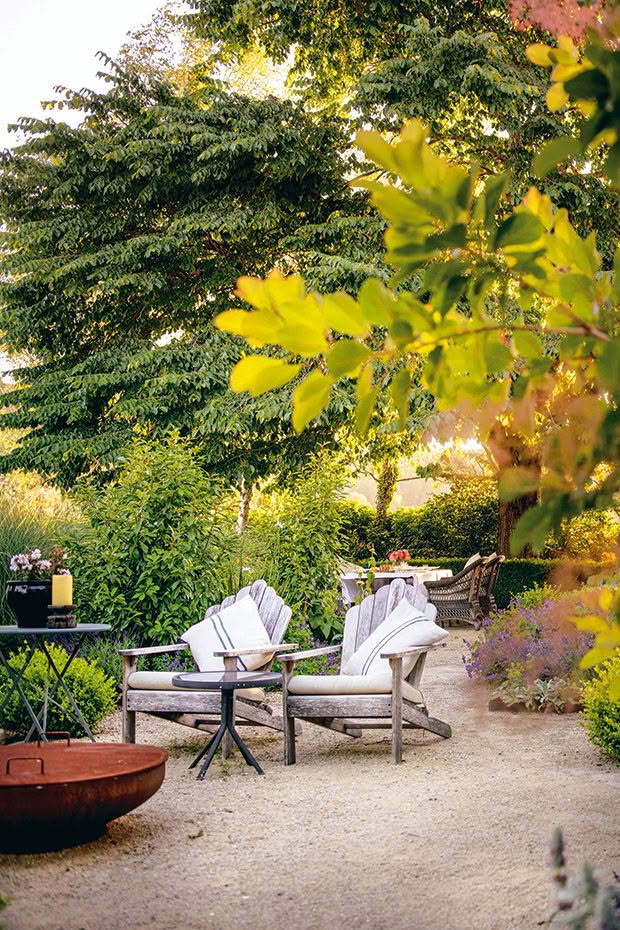
The gardens form natural rooms, each with their own time of day for maximum enjoyment. The firepit room is used mainly in the evenings.
Many years earlier, they cut their young-married teeth on postings abroad, with Rob working at the international accounting firm Touche Ross (now Deloitte) in Toronto and Susie as a physio in the intensive care department of a Toronto hospital. So, when the IOS called, it was no big deal to pack up their Wellington-based life — though now, they were in their 50s — and head to Geneva. It was tough to leave family behind, of course. Their two children, Allan and Alexandra, were adults by then (although, Alex did remark that it was usually the kids that left home, not the parents). It was Susie’s mother, Alison, who was the hardest to leave. They felt more comfortable about their absence once she was settled in the charming Wairarapa town of Greytown.
- Guests often enjoy dishes Susie learned to cook at Ballymaloe Cookery School in Ireland, such as a rustic courgette tart and lemon and pistachio cake. “Knowing where our food comes from is very important to us, so we try to grow as much fruit and vegetables as possible. I’ve just added another veggie garden,” says Susie.
Sometimes, the coming home is more challenging. But not for this couple. They returned from Geneva in 2015 with a firm vision for what would suit them best. They wanted a slice of rural peace — a place with established trees, a sanctuary to enjoy nature near Susie’s mum in Greytown.
Eight kilometres north of Masterton, they found a charmingly rambly house with plenty of personality. It had great bones, big trees and a traditional garden. And, fortuitously, it needed just enough TLC to ensure Rob transitioned from 100 kilometres per hour to zero kilometres per hour at a pace that made him feel he was avoiding the dangerous waters of “retirement”.
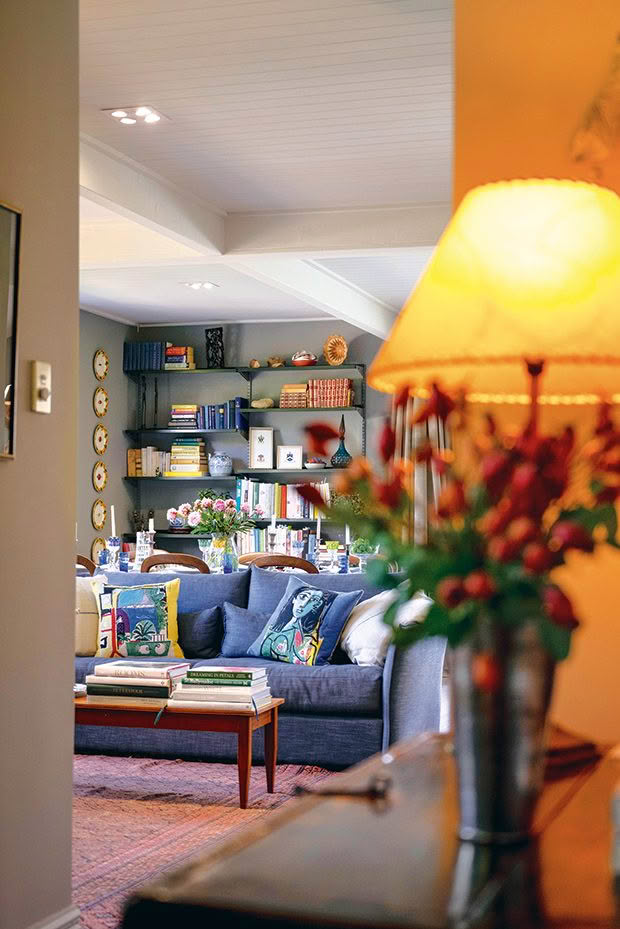
Overall, the house was functional, but they believed it could vastly benefit from rethinking — after all, a part of it originally came from Mt Bruce Station on the back of a truck in the 1970s. After a couple of years of getting to grips with its quirks and best points, Rob and Susie called on their friends, local architect Gregg Crimp and partner David Robinson of Robinson Crimp Architects (see NZ Life & Leisure, January/February 2023), to help bring it fully into the modern world. They also asked Hamish Moorhead of Hamish Moorhead Landscapes to collaborate in getting the garden into Susie’s preferred zone of the New Perennial Movement, often called prairie gardens.
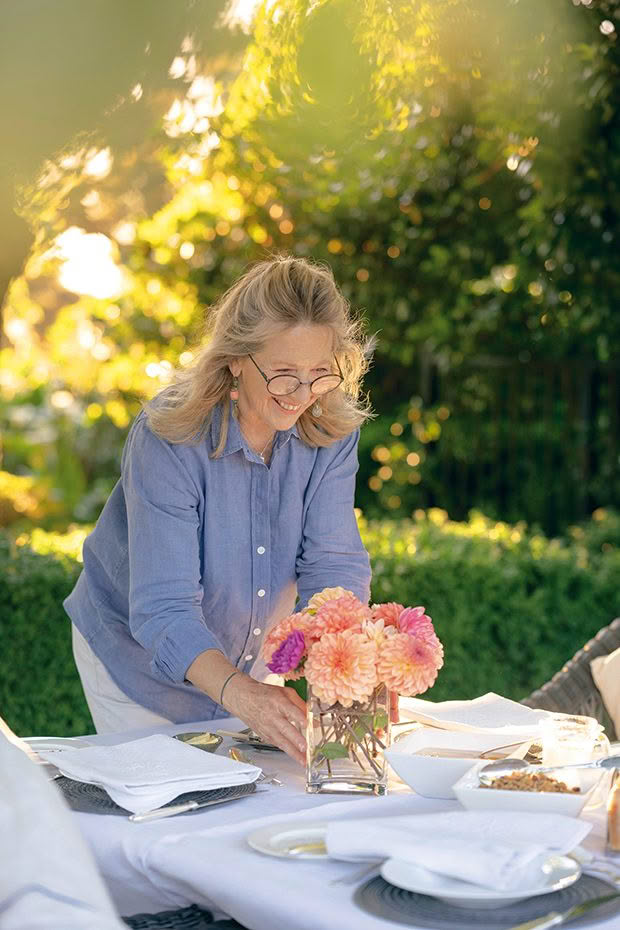
Susie has a spot in her vegetable garden dedicated to growing dahlias in fond memory of Rob’s late mother, Dawn (a dahlia fan) and because Susie loves to fill her home with flowers.
The couple claims to be garden novices, but that is surely an overly modest understatement as their green fingers are evident in the clever drought-resistant plantings, healthy hedges, happy orchard and burgeoning vegetable gardens. Just as the house needed to lift its eyes to its namesake, Ranginui (the Sky Father), the trees and gardens required opening up to embrace the sky and let in more sunshine and views.
With a deep breath and having suffered from too many sunless days inside the house, they decided to be done with the low-hanging colonial-era verandahs that enveloped them. Off they came, and in a similarly bold move, out came the dark hedges of menacing thuja conifer that enveloped the gardens.
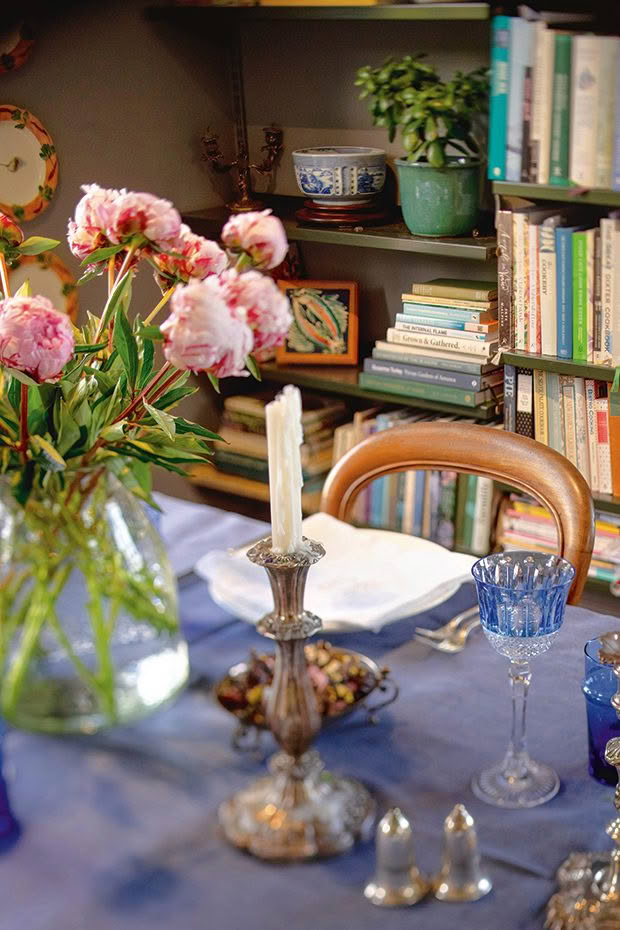
And there it was, all that glorious light from full-height double-hung windows streaming at long last into the far corners of the rooms. The views out to the gardens were all about wafty, willowy miscanthus sinensis, waving in even the gentlest of breezes to dance with the colourful salvias, sedums and phlomis.
Susie wished to have her elderly mother come and live with them, ideally in independent accommodation. She searched for a relocatable house and thought she’d found one in Hawke’s Bay. She, David and Gregg drove off for a fun day to check it out and returned having purchased it. Susie’s mother moved in after a clever refurb designed by Gregg and David. She loved being so close, with views over the gardens and many daily visits from Susie and Rob’s two dogs Biskit and Coco (a briard and labradoodle, respectively).

After the death of Susie’s mother, and with their children away (Alex in London and Allan in Christchurch), they wanted to keep busy and meet people. “From our time spent in similar boutique lodge accommodation overseas, we knew visitors would want to know the special places only locals know. Our guests can walk across the fields to a tiny vineyard, Bijou, that most people have never heard of, or take a walk in the Taraura Forest Park.” To their delight, they’ve found that hosting guests brings them even more pleasure than anticipated.
- Susie and Rob decided to open their home as a boutique lodge after Susie’s mother died, and they had time to devote to guests. Susie’s interior design training, plus their wide range of books, art and items acquired abroad, means their home is a fascinating mix of local art alongside face masks from Burkina Faso and Chinese pottery. “We understand the place has been a modest cottage, a substantial family home, a wedding venue, and now it is a boutique lodge. We’d love to hear what the walls would say if they could talk.”
“If you listen to the daily news, you’d think there were only negative things happening in this country, but the people who have come to stay here are optimistic and see the world in an uplifting way.
“The joy of meeting them restores your faith in human nature,” says the couple about their latest “un-retirement” project. Their only problem is plucking up the courage to ask people to pay. And that part didn’t come easily.
NEW PERENNIAL MOVEMENT APPROACH
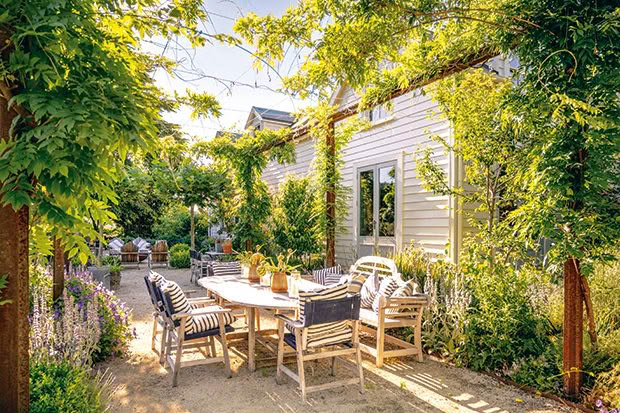
The steel railway tracks forming the pergola structure designed by Gregg and David came from Masson’s, a local engineering firm. The tracks are rapidly vanishing beneath the twining branches of white wisteria.
Hamish Moorhead of Hamish Moorhead Landscapes was Susie’s mentor and collaborator in the garden redesign aimed atreleasing its previously formal structure with aspects of the New Perennial Movement.
“The garden suited the lovely foil of a softer, more colourful array of plants as it already had great structure and scale of existing trees and formal hedging. Susie wanted to work with the environment and reflect something of the wider Wairarapa landscape. This New Perennial Movement approach takes a garden through the seasons with different looks and stages and, generally, requires fewer petrol-powered tools and less water. Dense planting shades the soil and is more forgiving; if a plant is looking a bit stressed, it doesn’t matter as much as in a very formal garden.”
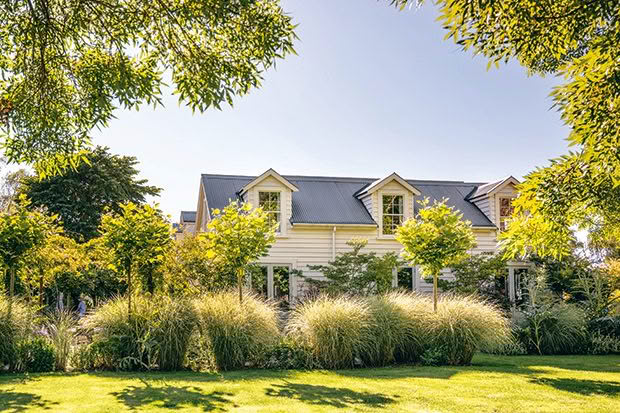
The exotic silvergrass (miscanthus sinensis), providing garden structure and soft movement in spring breezes, turns golden in autumn and is cut to the ground in late winter before emerging fresh and green in spring. Native grasses are not so forgiving of such a severe haircut.
For showy seed heads and gentle movement, Hamish and Susie used a mix of exotic and native grasses including silvergrass (miscanthus), red tussock (chionochloa), gossamer or wind grass (anemanthele) and reedgrass (calamagrostis). The native grasses are not as forgiving of an annual winter chop back as the exotics, which flourish with the spring refresh.
For colour, Hamish and Susie used salvias (also known as sages), sea holly (eryngium), giant hyssop (agastache), bergamot (monarda), russell sage (phlomis) and yarrow (achillea) in a variety
of colours.
Hamish says a valuable aspect of such a garden is the way it holds interest throughout the hot Wairarapa summer and well into late autumn when beautiful seed heads appear.
BE OUR GUEST
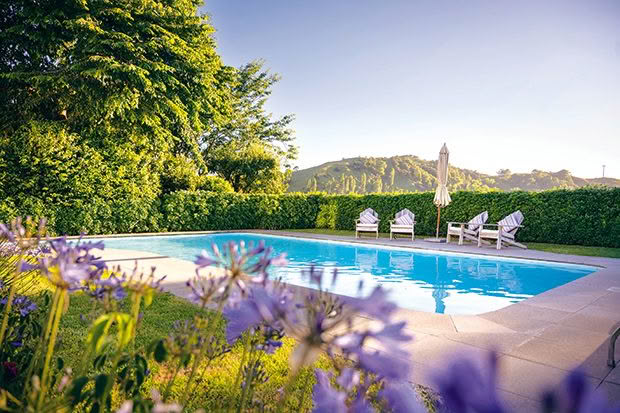
Guests need to bring swimming gear, but tennis racquets (for the all-weather court) are provided. The nearby Mt Bruce National Wildlife Centre (Pūkaha, where endangered bird species are bred) benefits from a donation for each Ranginui Retreat guest. And a native species is planted in the grounds to mark every guest.
What have you learned from two years of operating a boutique luxury lodge in your home?
Building personal connections with guests is paramount; the warmth of a welcoming environment goes beyond opulent amenities.
What have been the ups and downs?
Unexpectedly, we encountered challenges such as maintaining a consistently high standard, balancing personal and “hosting” life, and the time it takes to build a business. However, the benefits have surpassed expectations. Beyond financial rewards, the joy of creating memorable experiences for our guests, positive online reviews, and a sense of accomplishment are immeasurable.
It demands dedication, flexibility, and a commitment to exceeding guest expectations. Strive for excellence, build genuine connections, and be prepared for challenges and rewards.
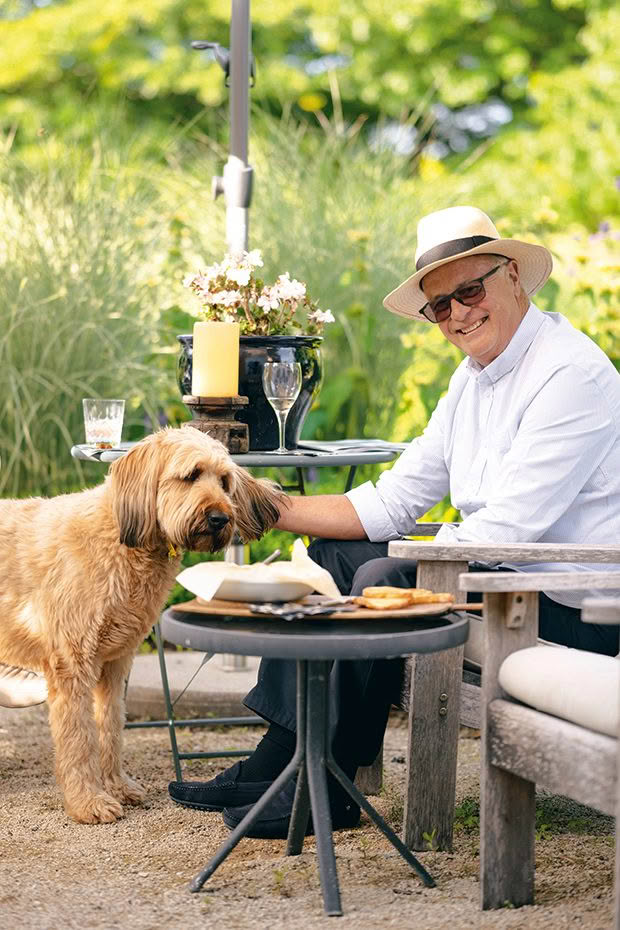
What is your advice for others thinking of setting up an accommodation business?
Prioritise customer experience, invest in quality amenities and service delivery, think carefully about the marketing strategy, and embrace the uniqueness of your space.
Ranginui Retreat Luxury Accommodation Wairarapa | ranginuiretreat.co.nz
Love this story? Subscribe now!
 This article first appeared in NZ Life & Leisure Magazine.
This article first appeared in NZ Life & Leisure Magazine.
